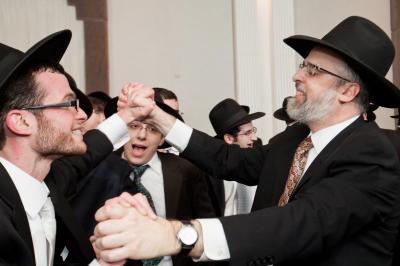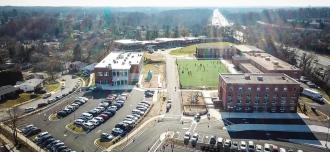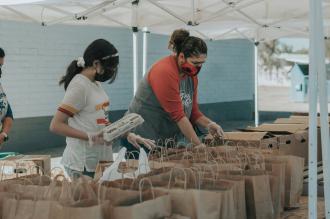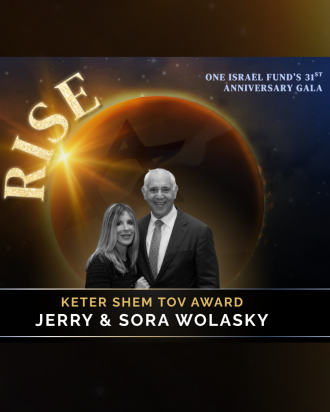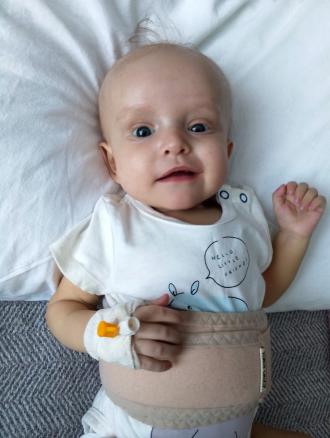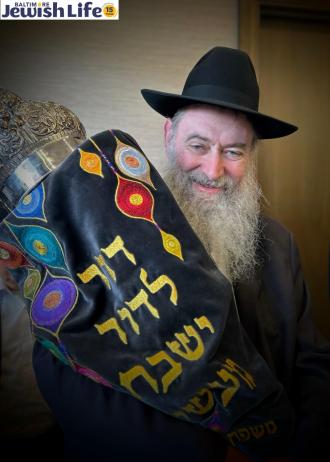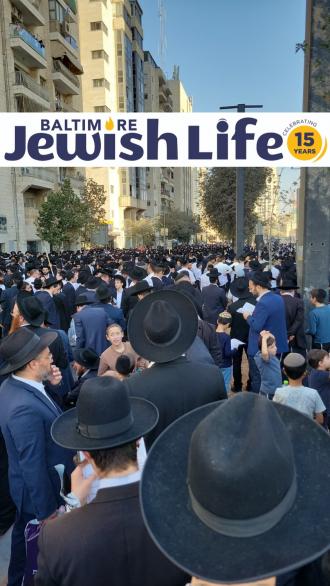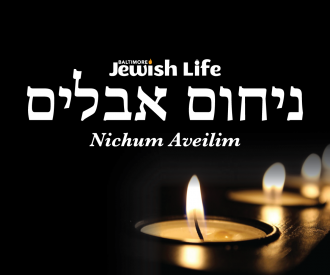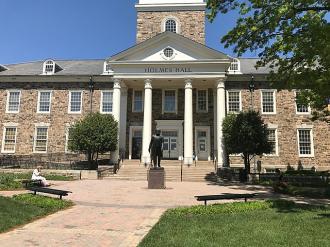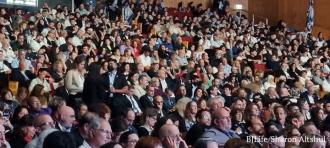וַיַּעֲשׂוּ חָג שִׁבְעַת יָמִים וּבַיּוֹם הַשְּׁמִינִי עֲצֶרֶת כַּמִּשְׁפָּט, וּבְיוֹם עֶשְׂרִים וְאַרְבָּעָה לַחֹדֶשׁ הַזֶּה נֶאֶסְפוּ בְנֵי יִשְׂרָאֵל בְּצוֹם וּבְשַׂקִּים.
(נחמיה ח:יח–ט:א)
And they kept the festival of Sukkos seven days, and on the eighth day there was an assembly of Shemini Atzeres, according to the law. And on the twenty-fourth day of this month the children of Israel were assembled with fasting and in sackcloth. (Nechemia 8:18-9:1)
I walked into Bnai Jacob Shaarei Zion on Thursday morning, the day after Simchas Torah, bleary-eyed and aching with raw emotion. In the pre-dawn hours of the morning, we had piled our family in the van to make the trip from Philadelphia to Baltimore for a levaya I couldn’t believe was real.
It’s still hard to believe, or to accept. It’s difficult for me to put into words what Rabbi Hauer meant for me. He was an anchor in my life from before my Bar Mitzvah, almost 25 years ago. My Rav, mentor, and a profound role model. He was always there, supporting me, believing in me. Without saying a word, his presence motivated me to do my best. He stood by my family and me in every moment of joy and sorrow. In painful times, he offered a listening ear and acted as a bulwark of inspiration, wisdom and strength.
Now, sitting at the levaya, in a room packed with people, I felt utterly and painfully alone. How could anyone else understand the depth of our connection, the love I felt for him and that he felt for me. Who knows how many people felt the same.
He always knew the right thing to say, and the right way to say it. His brilliance radiated in everything he said, from his masterful drashos, to his sage advice – even to his hilarious one-liners. An example: On Simchas Torah 2001, I distinctly remember that in an age-old act of mischief, someone had tied a couple of men’s tallis strings together. Being that it was just weeks after 9/11, terrorism was at the forefront of everyone’s mind; someone jokingly suggested to Rabbi Hauer that perhaps it was an act of terror. With impeccable timing and delivery, he shot back, “It must have been one of those fringe groups.”
Anytime he spoke, it was a masterpiece. He didn’t just say a thought and connect it to the parsha. He was an artist, a baal mechadesh and a master presenter all in one, seamlessly and beautifully bringing together every idea into a unified, poignant, and fundamental message.
I remember once driving with him. I needed to speak with him about a personal matter, and he had a wedding to attend at Martin’s West, so he suggested I come along for the ride and we would shmooze in the car. When we got to the hall, he apologized as he left the car and assured me he would be back soon. In under ten minutes, he had gone in, danced with the chosson and returned, quipping in his inimitable style that an experienced rabbi has the ability to attend a wedding for the shortest time and to make the maximum impact “down to a science.”
He had the unusual ability to explain deep and profound ideas in terminology anyone could understand. His strong command of language enabled him to appropriate words from one context to another, resulting in usages that I never would have thought of but that expressed his thoughts exactly. It wasn’t poetic flourish or academic showmanship. It was his desire to teach Torah richly, vividly, and accurately.
I had the very special privilege to be part of the Hauer’s Pesach Seder for several years and the entire experience is one I try my best to replicate each year at my own Seder. I often hear Rabbi Hauer’s singsong voice in my ears as I read the words of the Haggadah. The innovative games designed by the Rebbetzin for the Hauer children have inspired some of my own. But my most remarkable memory was that, at the end of the Seder, usually between 3 and 4 in morning, Rabbi Hauer would help to clean up, and then — he would insist on walking me and my family all the way home!
What will Yom Tov be without Rabbi Hauer? His joy, his energy, his passionate davening and spellbinding lecture series were the cornerstones and the highlights of Yom Tov for me and so many others.
What will Tisha B’av look like? Every year, he explored the life of a single individual who had made a meaningful impact on Klal Yisroel. The presentation was meticulously prepared like everything he did, and lasted over four hours, enthralling the hundreds who came and many more who viewed it via the livestream. I wondered when he had the time to put it all together. But what struck me was how Rabbi Hauer – a person whose heart was there for every individual but whose eyes saw the big picture, the broad perspective – was himself such a person. So many of the messages he shared could have been said about himself, as well.
Once, while speaking about Rav Meir Shapira, Rabbi Hauer paraphrased an essay by Rav Yehuda Leib Gefen, a talmid of Yeshivas Chachmei Lublin:
In the history of the Jewish people, there are all kinds of images of greats of the spirit, and people who were great people of action from generation to generation. Each one was different. The first one would be the head of the community, and the second one would be the eyes of the community. The head of the community would be the one who would give counsel to the community. The thinker. The eyes penetrate practically, seeing every place.
Ho’echad mashlim es chaveiro. They work together, and the two of them together produce a leadership for the Jewish people. The one who thinks conceptually, and the one who perceives and acts.
If you go through the pages of the histories of the Jewish people, and of its sages, and of its scribes in recent history, we will see how few there were who excelled in both of these things together. We were wealthy in people who were great of spirit. We were wealthy with people of great action. But we were poor in those who combined the two of them together. And the one who did combine the two of them together was Rav Meir Shapira.
And, I would like to add, another who combined the two was Rav Moshe Hauer.
He was passionate about Torah and a gaon in Torah, a master of creative thinking and analytical thinking. And he was passionate about Klal Yisroel, the nation and the individual people, its aspiring leaders and its most lonely and forgotten. He was the head and the eyes. A man of vision and action.
Rabbi Hauer was genuine. He embodied what a person looks like when they make Torah their life’s charter. In Rabbi Hauer’s own words, quoting the Chasam Sofer: “The Torah says you should be a sublime person, that G-d created man b’tzelem Elokim, in the Divine image. They’ll look at you and they’ll say, ‘Yes, I see what that means.’ Na’aseh adam b’tzalmeinu kid’museinu was said about you.”
Thank you, Rebbe, for giving us a living portrait of these words.
